![St. Ferdinand, Johann Nepomuk Church [de], Vienna Vienna knight (13003969123).jpg](http://upload.wikimedia.org/wikipedia/commons/thumb/e/e3/Vienna_knight_%2813003969123%29.jpg/225px-Vienna_knight_%2813003969123%29.jpg)
Franz Bauer (1798, Vienna - 14 March 1872, Vienna) was an Austrian sculptor in the late Classical style.
![St. Ferdinand, Johann Nepomuk Church [de], Vienna Vienna knight (13003969123).jpg](http://upload.wikimedia.org/wikipedia/commons/thumb/e/e3/Vienna_knight_%2813003969123%29.jpg/225px-Vienna_knight_%2813003969123%29.jpg)
Franz Bauer (1798, Vienna - 14 March 1872, Vienna) was an Austrian sculptor in the late Classical style.
From 1814, he studied at the Academy of Fine Arts, Vienna, with Johann Nepomuk Schaller then, after 1815, worked in the studios of Josef Klieber. A travel grant enabled him to study in Rome, where he worked with Bertel Thorvaldsen.
He returned to Vienna in 1842 and taught at the Academy. He was appointed a Professor at the preparatory school in 1852 and, from 1865, headed the general sculpture school.
His best known students included Carl Kundmann, Antonín Pavel Wagner, Johannes Benk, Rudolf Weyr and Viktor Oskar Tilgner.
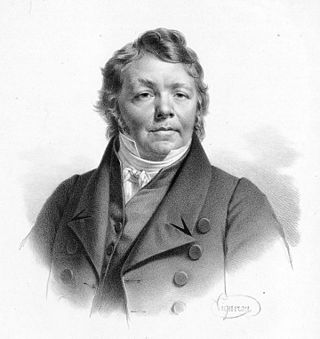
Johann Nepomuk Hummel was an Austrian composer and virtuoso pianist. His music reflects the transition from the Classical to the Romantic musical era. Hummel was a gifted pupil of Mozart, Salieri and Haydn. He had an immense impact on later piano music of the 19th century particularly in the works of Chopin, Liszt and Mendelssohn.

Johann Nepomuk Eduard Ambrosius Nestroy was a singer, actor and playwright in the popular Austrian tradition of the Biedermeier period and its immediate aftermath. He participated in the 1848 revolutions and his work reflects the new liberal spirit then spreading throughout Europe.
Christian Stelzel, known professionally as Magic Christian, is an Austrian professional magician and author. Christian was born on July 17, 1945, and presently lives in Vienna.
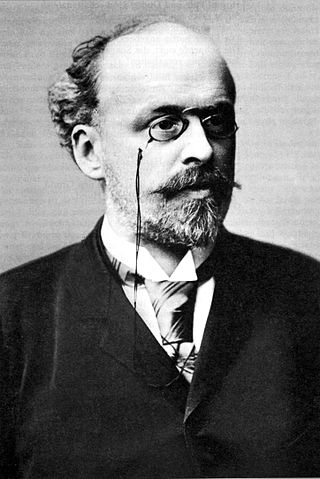
Carl Adam Johann Nepomuk Zeller was an Austrian composer of operettas.

Peter Johann Nepomuk Geiger was a Viennese artist.

Philipp Jakob Straub was an Austrian sculptor from a well-known family of German Baroque sculptors. His father Johann George Straub and his brothers Johann Baptist, Joseph, and Johann Georg Straub were also sculptors, as was his nephew Franz Xaver Messerschmidt.

Johann Nepomuk Fuchs was an Austrian composer, opera conductor, teacher and editor. His editorial work included an important role in the preparation of the first complete edition of Franz Schubert's works. He was an older brother of the composer Robert Fuchs.

Johann Nepomuk Czermak was an Austrian-German physiologist.
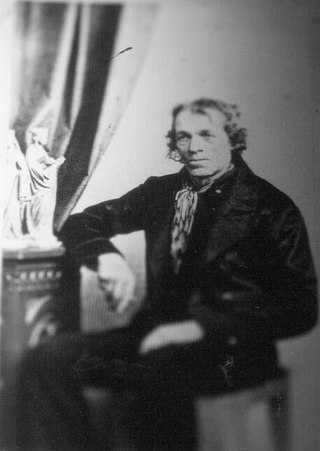
Joseph Gasser, after 1879: Ritter von Valhorn was an Austrian sculptor.
The Hitler family comprises the relatives and ancestors of Adolf Hitler, an Austrian-born German politician and the leader of the Nazi Party, who was the dictator of Germany, holding the title Chancellor of Germany from 1933 to 1945, and head of state as Führer und Reichskanzler from 1934 to 1945. Adolf Hitler had a central role in the rise of Nazism in Germany, provoking the start of World War II, and holding ultimate responsibility for the deaths of many millions of people during the Holocaust.
Johann Nepomuk Ehrlich was an Austrian theologian and philosopher born in Vienna.

Viktor Oskar Tilgner was an Austrian sculptor and medailleur.

Johann Nepomuk Rust was an Austrian surgeon and military physician born at Jánský Vrch, Javorník, Austrian Silesia.
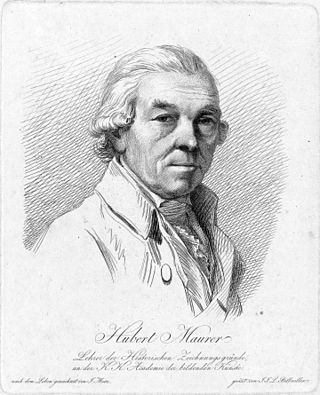
Hubert Maurer was a German painter, graphic artist and art professor.

Johann Nepomuk Ender was an Austrian portrait painter and engraver.

Jan Nepomucen Głowacki was a Polish realist painter of the Romantic era, regarded as the most outstanding landscape painter of the early 19th century in Poland under the foreign partitions. Głowacki studied painting at the Kraków School of Fine Arts and later at the academies of Prague and Vienna, as well as Rome and Munich. He returned to Kraków in 1828, and became a teacher of painting and drawing. From 1842 he served as a professor in the Faculty of Landscape Painting at the School of Fine Arts. His work can be found at the National Museum of Poland and its branches. Some of his work was looted by Nazi Germany in World War II and has never been recovered.

Carl Roesner was an Austrian architect.

Johann Nepomuk Schaller was an Austrian sculptor. His most famous work is a bust of Ludwig van Beethoven at age 55, created at the request of the composer's secretary Karl Holz in 1825. It was later presented to the Royal Philharmonic Society, London, on the occasion of the Beethoven Centennial.

Johann Nepomuk Schödlberger was an Austrian painter who specialized in landscapes; often with figures. He was largely self-taught.
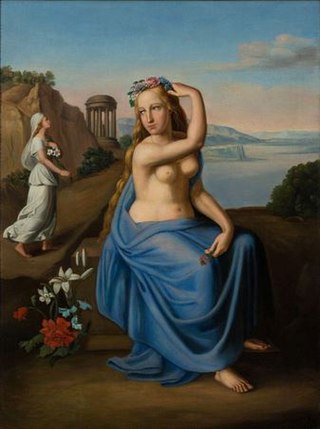
Anton Ferdinand Schaller was an Austrian painter in the Classical style.